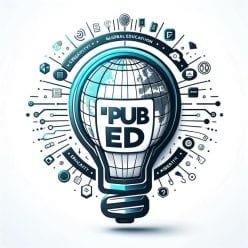Original notes by: Lauren F.
Typed up by: Katelyn C.
Relationships and Biodiversity
Molecular Evidence
What are some markers of Biodiversity that have been identified in the Natural World?
Well, let’s look at a few:
Phylogenetic distance; Phylogeny- The study of the evolutionary history and relationships among individuals or groups of organisms
Fossil Record- imperfectness
*Genetic Analysis- Mathematical Sequencing- Technology*
Proteome (complete set of proteins expressed by an organism); Microbiome (The genetic material of all the microbes); Analysis (Current)
Questions about proteins?
-Proteins contain Carbon, Hydrogen, Oxygen, and Nitrogen. Some even contain Sulfur.
-Proteins are mainly used for the growth and repair of cells.
-Their building blocks are called amino acids, in which there are 20 different kinds
-Proteins are found in hemoglobin(carries oxygen), skin pigments(melanin), hormones, antibodies, enzymes, hair/nails, and cell membranes
-Proteins are composed of one or more polypeptide coiled or folded in a specific way. Polypeptides are chains of amino acids
What happens when the body takes in proteins (pick a type of amino acid) and digests it?
-When the body takes in a protein it sends it to the stomach, where through the process of mechanical and chemical digestion will proteins be broken down small enough to pass through cell membranes into the body tissues to be used as nutrients
Are there examples?
The digestive process takes, on average, 12-24 hours. Proteins begin their journey, as do all nutrients, and travel to the stomach. Here, hydrochloric acid and pepsin break down protein into peptide chains (A peptide bond is the bond between 2 amino acids, so a peptide chain would be a chain link of peptide bonds). Proteins finish their journey in the small intestine, where peptidases snip peptides into amino acids for absorption
How do proteins interact with other proteins?
As we’ve read from earlier, proteins are typically linked together, which helps us to see how they never act alone. These links are called, as previously mentioned, peptide bonds. These are formed by a biochemical reaction, called dehydration synthesis, where one water molecule is extracted as it joins the amino group of one amino acid to the carboxyl group of a neighboring amino acid.
What could a mutation do in terms of its effect on a protein?
(This information came from help from the below link)
There are many different types of mutations that could affect protein function. A missense mutation changes an amino acid to another amino acid. This may not have a drastic effect on the protein, depending on what the amino acid actually does. A nonsense mutation changes an amino acid to a STOP codon, resulting in premature termination of translation. A silent mutation doesn’t change the amino acid, but can have a phenotypic effect by speeding up or slowing down protein synthesis. A frameshift mutation consists of a deletion or insertion of a number of bases that is not a multiple of 3. This will usually introduce premature STOP codons, as well as lots of amino acid change
What are plant proteins? Could they be interacting with our immune system? I.e allergies- food & environmental
Plant proteins are proteins that originate from plants. They will interact with our immune system, as the nutrients we obtain from these plant proteins from digestion will greatly help to make us feel stronger and better. These proteins could also trigger an allergic response, as they are a foreign entity that would enter our body. Antibodies can bind to the surface of mast cells, which contain histamine and can trigger an inflammatory response.
Biodiversity
Measure of type of organisms in a location
Eco-stability- When the different groups of organisms in an environment and the resources are in an equilibrium of each other
Darwinian Finches- Charles Darwin observed finches on the Galapagos Islands, and noticed how the finches on one island were different than those on another island. The differences were most notable in the beaks that the finches had. Some beaks were short and fatter, and some were longer and thinner. This was because finches on one island had more access to nuts and berries, while the others had better access to eating things like insects. He concluded that these species had adapted to the environment in which they were living in, and that not only the finches did this, but ALL species living on Earth arrived to their current form through centuries of Evolution and Adaptation.
Evolution by Natural Selection- 1. Some characteristic of trait (variation) must exist that is 2. at least partially hereditary. 3. Some variants must survive and reproduce in greater numbers
A population undergoes Evolution
We also see cool relationships between living systems. One modality of interconnection- symbiosis- shows the delicate balance and intricacies of the natural world at its finest
Think about the importance of balance and homeostasis in systems. A system must “calibrate” in order to work efficiently. Like a suspension bridge
In the case of a bridge, there is a range of weight/force it is built to withstand
Is it OK to think about our genetic code like this bridge? A system- a sequence of codes that allows for excess force, integration, and possibly even- dare I say it- expansion?
Think of the Prefrontal Cortex- and think neuroexpansion- think “junk” DNA as a seed that will emerge under the right circumstances as an aggregate of mutation and heredity- which is only plausible as genetic sequences are exponential functions.
Next, we must think about limits, and wonder if this is the sort of “critical density” in which the code mutates to the point that one mutation works with another to produce a “tertiary” effect- therefore, we observe neurological phenomena such as synesthesia. Synesthesia is a neurological condition in which stimulation of one sensory or cognitive pathway leads to automatic, involuntary experiences in a second sensory or cognitive pathway.


